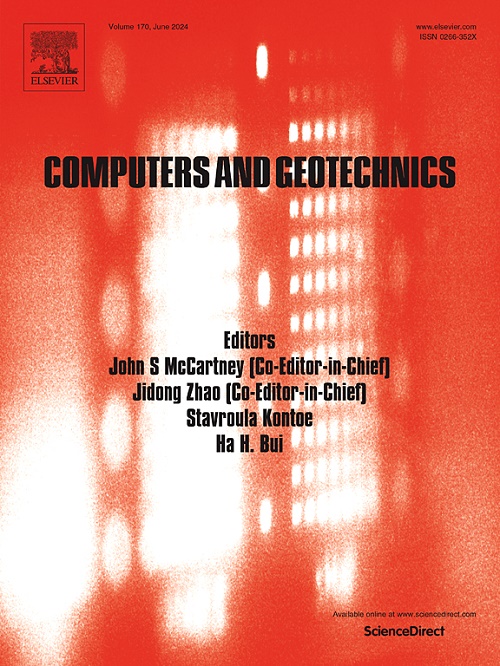Developing a memory-efficient GPGPU-parallelized contact detection algorithm for 3D engineering-scale FDEM simulations
IF 5.3
1区 工程技术
Q1 COMPUTER SCIENCE, INTERDISCIPLINARY APPLICATIONS
引用次数: 0
Abstract
Despite FDEM’s superior advantages in modeling solid deformation and fracturing behaviors for engineering-scale analysis, it has been restricted to two-dimensional (2D) scenarios, with three-dimensional (3D) scenarios remaining relatively unexplored due to excessive memory constraints and computational overheads, especially in contact-related computations. This study proposes a GPGPU-parallelized contact detection algorithm to address memory constraints in 3D FDEM engineering-scale simulations. The search domain is initially divided into equally sized search cells (subCells). Through an initial element mapping procedure, subCells containing at least one solid element (realCells) are identified. RealCells are dynamically pinpointed through hashing, forming subCell-realCell lists, which allows directly allocating GPU’s memory to useful realCells instead of all subCells. Then, a second element mapping operation populates realCells with element IDs, followed by a broad search at the CUDA block level for potential contacts and a narrow search to determine actual contacts. The algorithm’s effectiveness is first verified through three benchmark tests, and then further highlighted by two engineering-scale simulations showcasing a significant decrease in GPU memory consumption with the comparable computational time. We demonstrate that the proposed algorithm reduces memory usage of the contact detection phase by 85% compared to the conventional algorithm in a 3D engineering-scale simulation involving over 8.5 million tetrahedral and 17.6 million cohesive elements.
求助全文
约1分钟内获得全文
求助全文
来源期刊

Computers and Geotechnics
地学-地球科学综合
CiteScore
9.10
自引率
15.10%
发文量
438
审稿时长
45 days
期刊介绍:
The use of computers is firmly established in geotechnical engineering and continues to grow rapidly in both engineering practice and academe. The development of advanced numerical techniques and constitutive modeling, in conjunction with rapid developments in computer hardware, enables problems to be tackled that were unthinkable even a few years ago. Computers and Geotechnics provides an up-to-date reference for engineers and researchers engaged in computer aided analysis and research in geotechnical engineering. The journal is intended for an expeditious dissemination of advanced computer applications across a broad range of geotechnical topics. Contributions on advances in numerical algorithms, computer implementation of new constitutive models and probabilistic methods are especially encouraged.
 求助内容:
求助内容: 应助结果提醒方式:
应助结果提醒方式:


